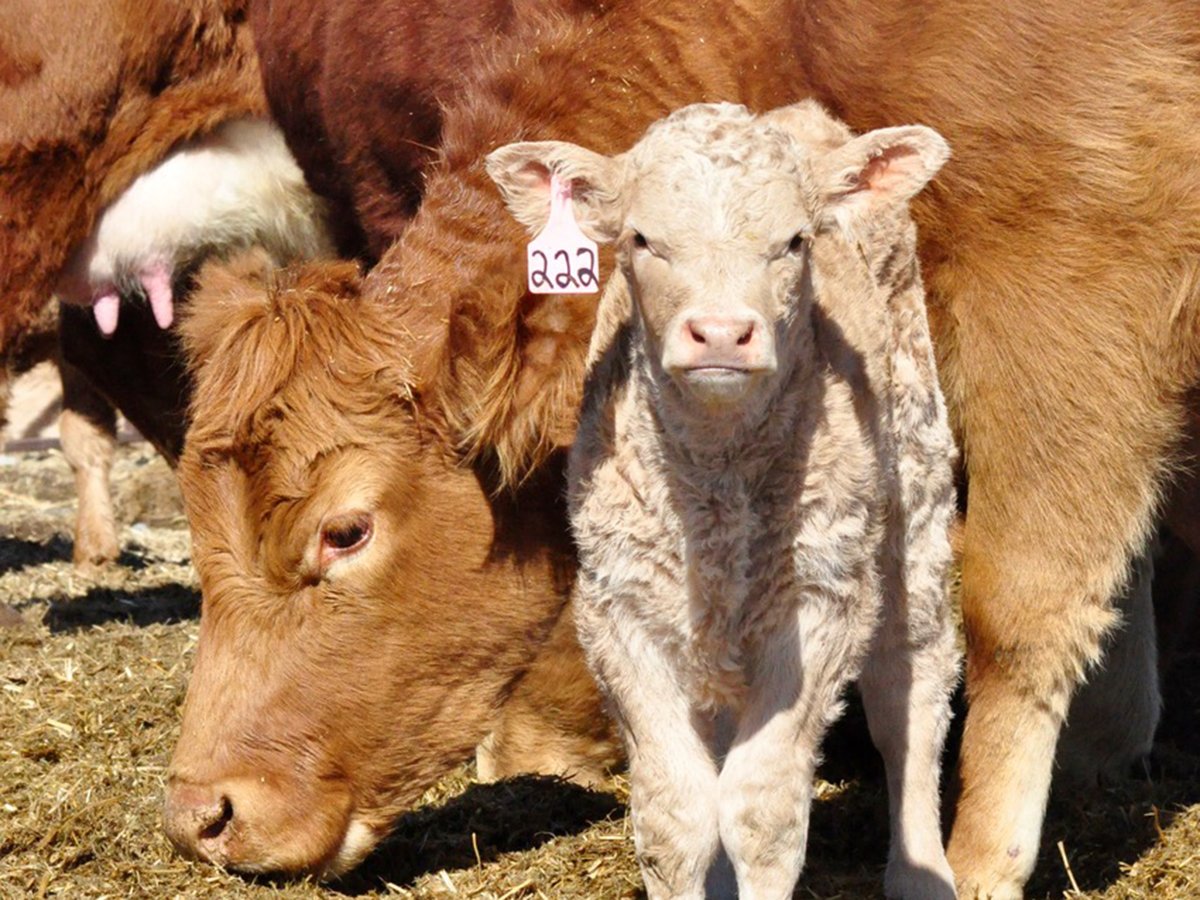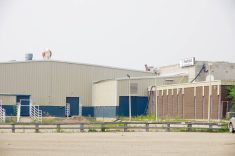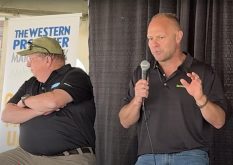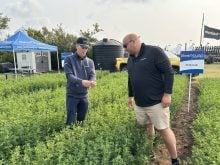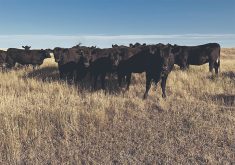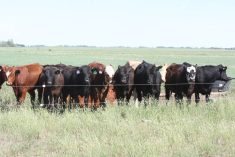Glacier FarmMedia – Canada’s sky-high cattle prices have been the talk of the industry for months. In 2024, farmers could get 13 per cent more for animals they brought to auction compared to the previous year, according to Statistics Canada.
Those prices have stayed afloat in 2025, despite worries earlier this year that tariffs would end the party early.
It’s a welcome shift for cow-calf producers, whose market has sunk into signficant price valleys several times in the last 25 years.
Read Also
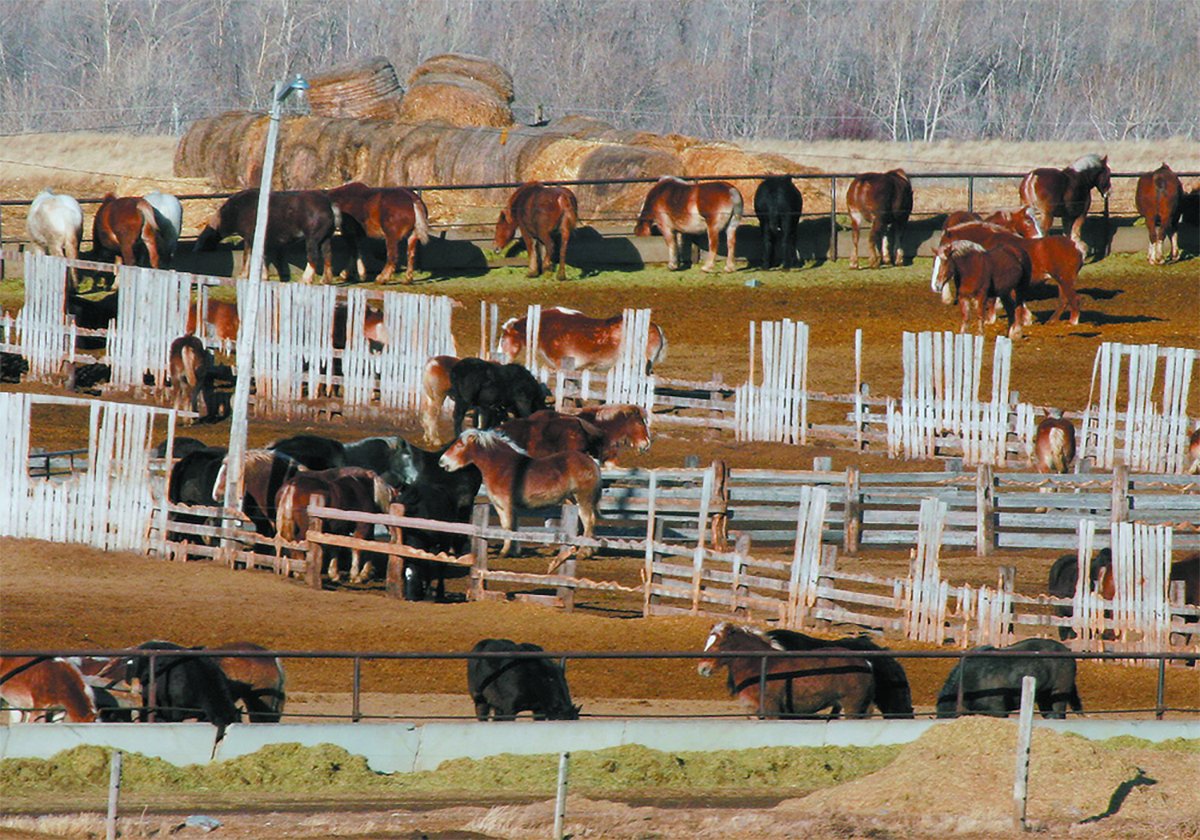
Canada’s slaughter horse industry lacks transparency
The lack of clear reporting and public access to data keeps the industry largely hidden, leaving questions about humane treatment and traceability unanswered.
While the influx has given beef producers financial wiggle room, what they’re doing with that money depends on farm size, location and individual priorities, among other factors.
Fraser Schram, co-owner of Northfork Ranch Supply in Cartwright, Man., said the farmers he talks to are being cautious. They’re still focusing more on needs than wants.
“They’ve been very wary to this point,” said Schram, whose store has a service area of about 100 kilometres.
“For 10 years, we listened to forecasts that the prices were going to go up, and then there always seemed to be a dark swan event: BSE came along and that blew things out of the water, and then COVID didn’t help. And so nobody is very confident that this is real.”
Connor English, a beef and perennial forage producer northwest of Brandon, Man., said his main priority is cutting costs in any nook and cranny it’s feasible to do so. That includes feeding practices that reduce costs and labour.
In other words, he’s preparing for when the bottom finally falls out of the cattle market.
He’s not focusing on darkening clouds, he insists. He’s looking at their silver linings.
“Right now, with the high market, we can try a few things that maybe we didn’t want to try when the market was low just because (we’re) not as comfortable to try new things when the budgets are that much tighter,” he said.
Schram, who was once a beef producer himself, is as happy as anyone about current cattle prices, but he’s not sure it’s sustainable, especially on the consumer end.
Beef has “become a middle, upper-class food for people to buy,” he said.
“I look at it a bit like lobster now. The way we used to look at lobster was that you had it once or twice a year, and that’s becoming what’s going to happen with beef. It’s a supply-demand thing, and the supply is so low right now. And honestly, I don’t know whether that’s going to turn around anytime soon for the cattle producers. I hope not, but for the consumer, it’s tough.”
Low cattle supplies have been sticky thus far in both the United States and Canada, with herd numbers facing an extended low period following critical and widespread drought early in the decade.
Across the Prairies, beef operations dropped 650,000 head between 2021 and 2024, or about 7.3 per cent, according to data from Statistics Canada.
While high prices would normally incentivize farms to build, industry instead noted an alarming number of herd dispersals.
In March, Tyson Foods chief executive officer Donnie King said U.S. beef producers might finally be entering a rebuild cycle.
Schram said there’s a lot of interest in solar-powered watering systems and electric fencing among his customers. He attributed much of that interest to financial incentive programs that the Manitoba government has rolled out for both.
“A lot of the provincial money that is being spent (on) farmers is on … temporary grazing equipment and solar-powered water systems that help people do a better job of keeping cattle out of waterways and out of dugouts and give them pressure water, etc.,” he said.
English is taking his purchasing focus off equipment that inevitably depreciates in value and more toward products that build wealth.
“I’m trying to just ensure that whatever we’re purchasing right now is an appreciating asset and we’re not going to be getting ourselves into any long-term debts that are just going to continue to depreciate,” he said.
“So we’re trying to stay away from things like upgrading loader tractors, balers, haybines — that sort of thing — and looking at other options.”
With feed being the biggest expense on his operation, extra hay turned out to be a good investment for English over the winter and spring.
Producers in Manitoba have had recent experience with the feed scramble during drought years such as 2021.
“We’ve gone out and secured a lot of winter feed, enough for two or three years worth, and we can really utilize that in a fashion in our feeding system. We’ll bale-graze cows — it takes really minimal labour and and we’ve kind of locked in a feed source at a very low cost for many years to come,” he said.
English doesn’t bother speculating much on how long high cattle prices are going to last. They’re outside of his control, he said.
What producers do have control over, he said, is purchasing livestock price insurance policies to set price floors for their cattle.
The business risk management program is meant to protect producers from price volatility and is enjoying a moment in the sun, given potential volatility from tariffs. At the same time, many producers have historically considered the non-cost shared program prohibitively expensive.
Past that, the producer has sold some cows and plans to sell a set of cow-calf pairs he considers “way overvalued” at this point in time.
“I think there’s lots of opportunity for moving out high-valued animals right now. Bred cows or cow-calf pairs seem to be very, very high-value, probably much higher than they have ever been.”
Government funding and lending programs can also be an indicator of what beef producers are buying. Dave Gallant is vice-president of finance and Advance Payment Program (APP) operations for the Canadian Canola Growers Association, the largest administrator of the federal loan guarantee program.
APP offers farmers up to $1 million in advances per year with the first $250,000 interest-free. Despite its canola ties, the association administers the full spectrum of the program, including beef cattle applicants.
Emphasizing the small sample size from a limited time frame of the 2025 APP season, Gallant said beef applications as of May 20 saw “50 per cent more applications for about 50 per cent more money,” compared to the same day in 2024.
General feedback — much of it anecdotal — suggests a number of beef producers are actually using funds to expand and rebuild their herds, said Gallant.
“The vast majorities are looking to either expand their herd or buying breeding stock, whereas in prior years, a lot of our conversations with the cattle producers mostly hung around feeding those cattle with the funds that they were borrowing.”
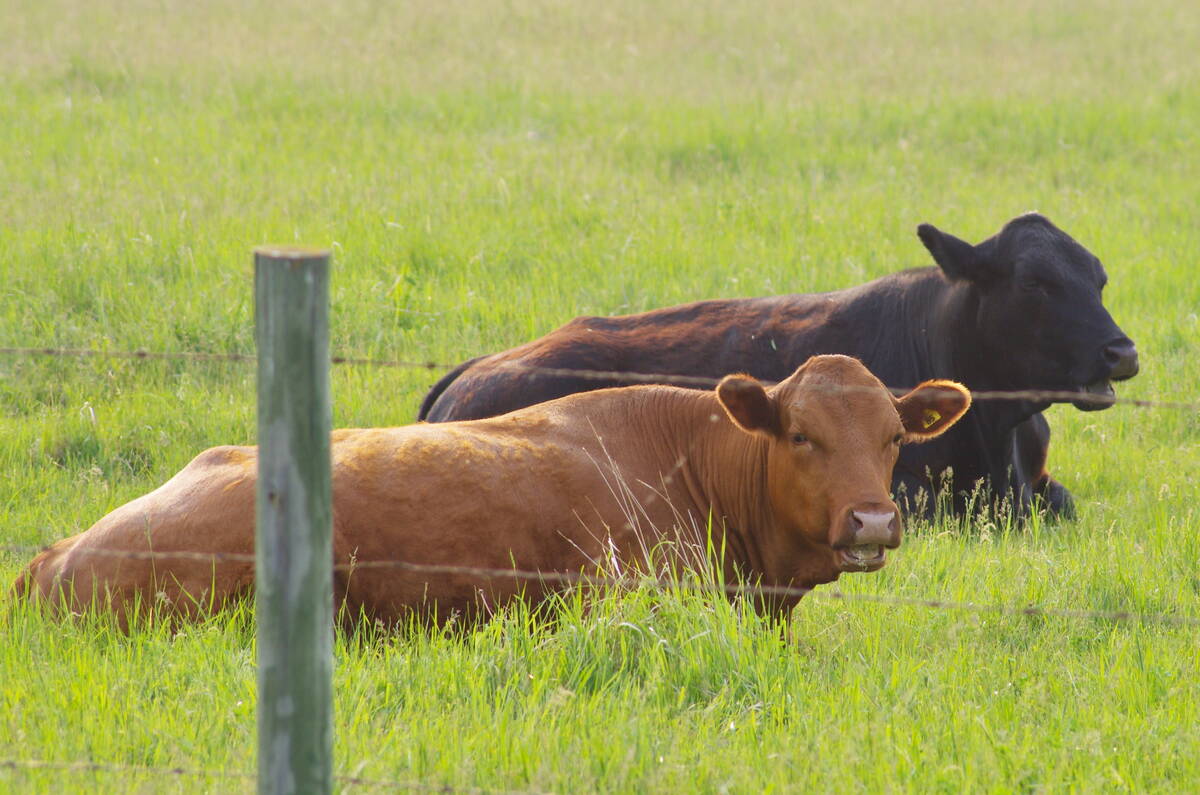
Gallant said that payback among beef cattle borrowers is happening at “a normal pace.”
Most aren’t rushing to pay back their loans before deadline to avoid extra interest.
“Farmers are paying off their advances about normal relative to any other prior years, so we’re not seeing any rapid repayments of advances simply because prices are higher for cattle,” he said.
Beef-related applications to another APP administrator group — the Manitoba Livestock Cash Advance program — are also coming in at higher numbers, said chair Mark Good. He credits it, in part, to heavier marketing of APP in 2024.
Good suggested that beef producers are using cash advances to pay down lines of credit to avoid rising interest. Equipment updates, dugouts and fencing are also high on the list, particularly with the incentives available through provincial beneficial management practice programming — cost-shared projects that the province links to sustainability.
Good, who is a beef producer himself, plans to submit his own Manitoba Livestock Cash Advance application in the near future.
He added that he has used extra revenue from cattle sales to buy a new aluminum stock trailer, in advance of U.S. tariffs on steel and aluminum.
“I got a little spooked when the Americans talked about putting 25 per cent tariffs on aluminum,” he said.
“I could barely afford it now, but I can’t afford it if the tariffs go on and the price goes up.”




